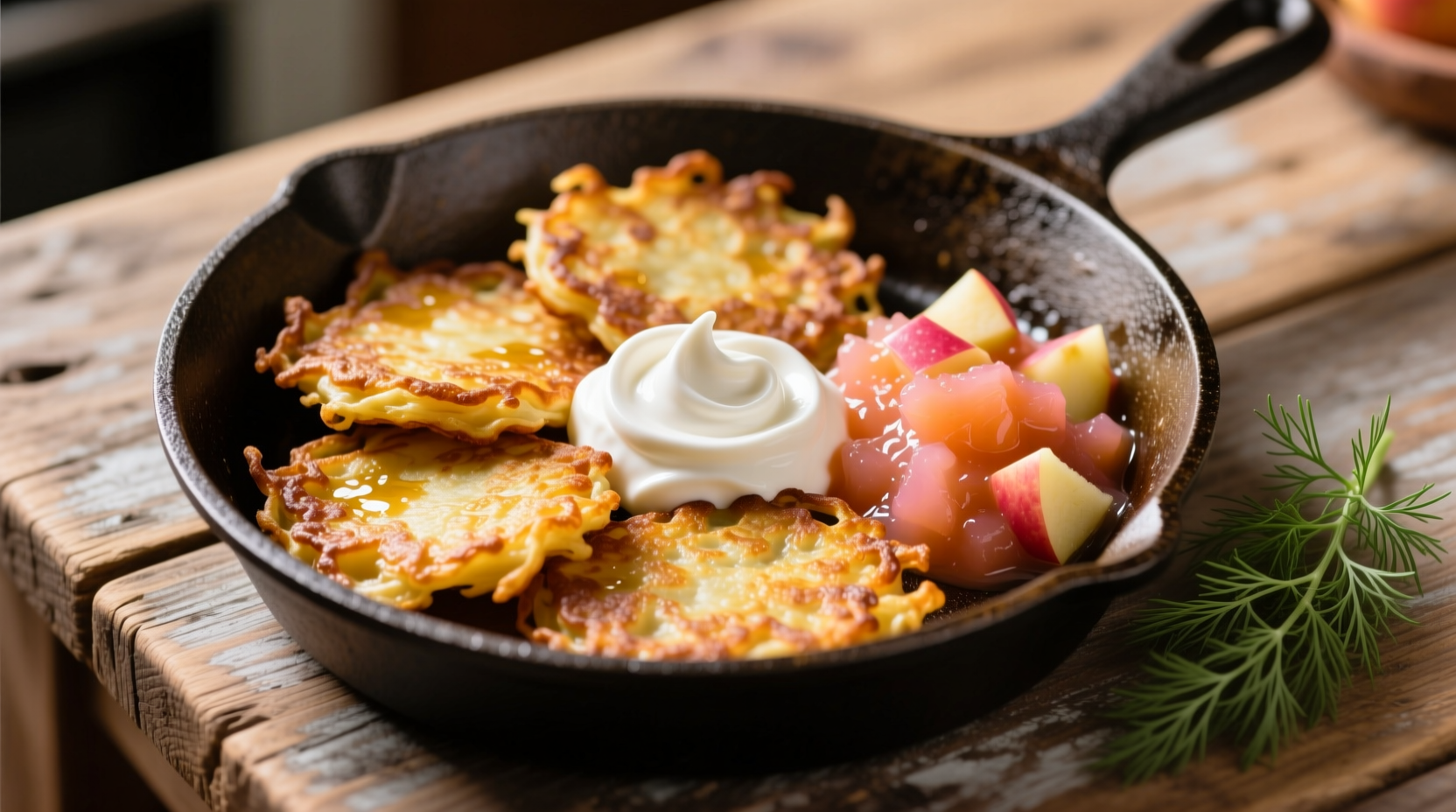Traditional potato latkes are crispy, golden-brown potato pancakes made from grated potatoes, onions, eggs, and matzo meal or flour, fried until perfectly crisp. This authentic recipe delivers restaurant-quality results with foolproof techniques to prevent sogginess and achieve maximum crispiness every time.
Discover how to make perfect potato latkes that stay crispy from the first bite to the last. Forget soggy, oil-soaked pancakes—our tested method ensures golden-brown perfection with a satisfying crunch. Whether you're preparing for Hanukkah or a weekend brunch, these latkes will become your go-to recipe with their authentic flavor and foolproof technique.
The Essential History of Potato Latkes
While often associated with Hanukkah celebrations, potato latkes have a fascinating evolution. Originally, Eastern European Jews made latkes from cheese during the Maccabean revolt era. The potato version emerged in the late 1800s when potatoes became widely available in Eastern Europe. This culinary adaptation transformed a simple peasant food into a beloved cultural tradition that spread globally with Jewish diaspora communities.
| Historical Period | Latke Composition | Cultural Significance |
|---|---|---|
| Pre-1800s | Cheese-based (farmer's cheese) | Commemorated Judith's victory with cheese |
| Late 1800s | Potato-based | Adaptation to potato availability in Eastern Europe |
| 20th Century | Modern variations | Global spread with Jewish diaspora communities |
Why Your Latkes Turn Out Soggy (And How to Fix It)
The #1 mistake home cooks make with potato latkes is inadequate moisture removal. Potatoes contain up to 80% water, which steams instead of fries when trapped in the batter. Our professional technique solves this problem completely:
- Choose the right potatoes: Russet or Yukon Gold varieties work best for their starch content
- Grate properly: Use the large holes of a box grater or food processor
- Remove moisture aggressively: Squeeze grated potatoes in a clean kitchen towel over a bowl (save the starchy liquid!)
- Use the potato starch: Let the liquid settle, pour off water, and add the white starch sediment to your batter

Authentic Potato Latkes Recipe
This perfected recipe delivers consistently crispy results with traditional flavor. Makes approximately 12 latkes.
Ingredients You'll Need
- 2 lbs Russet potatoes (about 3 medium), peeled
- 1 large yellow onion
- 2 large eggs
- 3 tablespoons matzo meal (or all-purpose flour)
- 1 teaspoon salt
- ½ teaspoon black pepper
- ¼ teaspoon baking powder (secret for extra crispiness)
- Vegetable oil for frying (at least ¼ inch depth)
Step-by-Step Preparation
Prep work (15 minutes): Grate potatoes and onion using the large holes of a box grater. Immediately transfer to a clean kitchen towel and squeeze out as much liquid as possible. Collect the starchy liquid in a bowl and let it settle for 10 minutes while you prepare other ingredients.
Perfect batter technique: In a large bowl, combine squeezed potatoes and onion with eggs, matzo meal, salt, pepper, and baking powder. Pour off the water from your starchy liquid, add the white sediment to the batter, and mix gently—do not overmix.
Frying for maximum crispiness: Heat ¼ inch of oil in a heavy skillet to 350°F (175°C). Drop ¼ cup portions of batter into hot oil, flattening slightly with a spatula. Fry 3-4 minutes per side until deeply golden brown. Drain on wire rack (not paper towels) to maintain crispiness.
Pro Tips for Restaurant-Quality Results
Professional chefs use these techniques to ensure perfect latkes every time:
- Oil temperature control: Maintain 350°F throughout frying—too cool causes oil absorption, too hot burns exteriors before interiors cook
- Batch frying limits: Never overcrowd the pan; maintain proper oil temperature by frying 3-4 latkes at a time
- Wire rack > paper towels: Draining on a wire rack prevents steam buildup that causes sogginess
- Season immediately: Sprinkle with flaky sea salt the moment they come out of the oil
Serving Traditions and Modern Variations
Traditional potato latkes pair perfectly with sour cream and applesauce—a combination that balances richness with sweetness. For contemporary twists, try these authentic variations:
- Herb-infused: Add 2 tablespoons chopped fresh dill or chives to the batter
- Garlic lovers: Mix 1 teaspoon garlic powder into dry ingredients
- Vegetable-packed: Incorporate ½ cup finely grated zucchini (squeezed dry)
- Gluten-free: Substitute matzo meal with almond flour or chickpea flour
According to culinary anthropologists at the Center for Jewish Food Ethics, "The evolution of potato latkes reflects broader patterns of cultural adaptation in Jewish cuisine, where available ingredients transformed traditional dishes while maintaining symbolic meaning." Jewish Food Society
Storage and Reheating Without Losing Crispiness
Latkes taste best fresh, but you can maintain quality with proper storage:
- Short-term: Keep warm in a 200°F oven on a wire rack for up to 1 hour
- Refrigeration: Store cooled latkes in airtight container for 2-3 days
- Reheating: Revive crispiness by baking at 400°F for 8-10 minutes (not microwave)
- Freezing: Freeze cooked latkes in single layer, then transfer to freezer bags for up to 3 months
Common Mistakes to Avoid
Even experienced cooks make these critical errors that compromise latke quality:
- Skipping the squeeze: Moisture is the enemy of crispiness—always remove excess liquid
- Overmixing batter: Creates gummy texture; mix just until combined
- Insufficient oil: Shallow frying causes uneven cooking and oil absorption
- Flipping too soon: Wait until edges are golden before turning (about 3 minutes)











 浙公网安备
33010002000092号
浙公网安备
33010002000092号 浙B2-20120091-4
浙B2-20120091-4